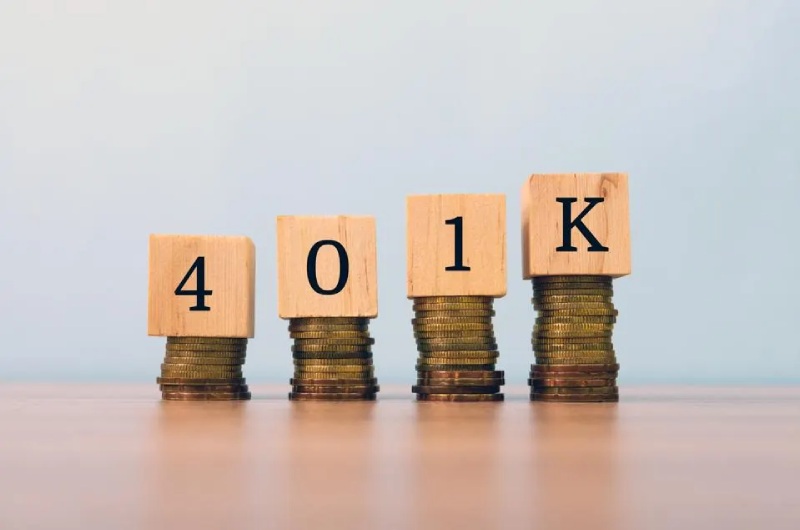
One of the main sources of your long-term prosperity and stability is probably your 401(k). Thus, it is imperative to optimize its capabilities. Although setting up an automated monthly contribution to your 401(k) is a fantastic place to start, there are a lot of other ways you may quickly increase the value of your account. Here are some tips for contributing to your 401(k) wisely so that you may help guarantee that you’ll meet your retirement savings targets.
Your 401(k) can benefit greatly from additional funding from your tax refund. Transferring it to your 401(k) shouldn’t seem like you’re taking money out of your pocket because it’s essentially a source of “extra” money that shouldn’t be in your monthly budget. It’s a painless approach to increase your 401(k) balance in that regard. Another smart strategy to guard against squandering your tax refund on pointless discretionary expenditure is to deposit it straight into your 401(k).
Starting to contribute 15% of your income to your 401(k) plan right away can be challenging, especially if you’re just getting started. But increasing your contribution percentage on a regular basis in little steps is a fantastic method to reach that level.
Let’s take a scenario where you feel you can’t make the sudden switch to 15% of your income but are comfortable setting aside 5% of it. If at all possible, start by increasing your contribution by 1% annually or even monthly. You won’t even notice the small increases in your paycheck deductions when you’re maxing out your 401(k). For instance, a 1% increase in your contribution rate will only add up to $500 annually, or roughly $40 per month, if your annual income is $50,000.
A part of the contributions made by most large firms to their employees’ 401(k) accounts are matched. In essence, this is free money that can significantly increase your long-term 401(k) balance. Therefore, in order to receive your full employer match, you must contribute at least as much as necessary. For example, a lot of employers will match 50% of the first 5% of your income that you deposit into an account. In that case, in order to receive the 50% increase, you should set aside at least 5% of your earnings.
This could have the following effects on your long-term retirement funds. If you were making $50,000 a year and saving 5% of that, you would have $2,500 a year. Your account would be credited with an additional $1,250 annually if your employer matched half of that sum. If you were to earn an 8% return for 30 years, you would have about $465,000 as opposed to about $310,000 if there was no employer match.
It should go without saying that the higher the potential return on your assets, the larger your nest egg will eventually be. Selecting investments that align with your financial goals and risk tolerance is a wise first step, even though it’s impossible to forecast how they will perform exactly. For instance, the majority of investors seek long-term growth from their 401(k) accounts, so you should invest in stocks or other options with the highest potential for financial appreciation.
Even while stocks can experience short-term volatility and bear markets can cause values to decrease by more than 20%, your chances of success with stocks increase with the length of time you hold them. As the S&P 500 has never experienced a loss of capital over a 20-year rolling period, holding stocks really carries a far lower risk if you have a long-term outlook.
Fees are a death sentence in any kind of investing account, even 401(k) plans. The U.S. Department of Labor states that even a 1% fee could cause your final retirement plan balance to drop by 28%. For this reason, it’s imperative to minimize expenses wherever feasible. If the total cost of your plan is significant, think about discussing ways your HR department might improve employee service. Select investment solutions that offer the best return along with the lowest expenses if you are unable to advance in that area. Over the course of a decades-long investing period, a seemingly insignificant reduction in fees might result in a substantial amount of savings.
Your annual bonus and your tax refund are both excellent sources of “free money” to add to your 401(k) plan. Like your tax refund, your bonus shouldn’t be included in your monthly budget, so you shouldn’t rely on it to cover your daily expenses. Because of this, it’s an excellent choice for long-term investments, such as 401(k) plans. Over a 30-year period, an additional $3,000 annually invested at 8% might result in an additional $367,000 in your 401(k) account.
In today's fast-paced digital landscape, effective communication is the cornerstone of business success. As businesses… Read More
Social media has become a crucial component of marketing plans for companies of all kinds… Read More
Temperatures can rise dramatically as summer approaches, leaving us feeling stuffy, hot, and uneasy all… Read More
When consumerism is prevalent, it's simple to become caught up in the cycle of living… Read More
This spring, the housing market is in an odd place. Although it is improving, there… Read More
Cash bonuses are a common strategy used by banks and credit unions to entice new… Read More